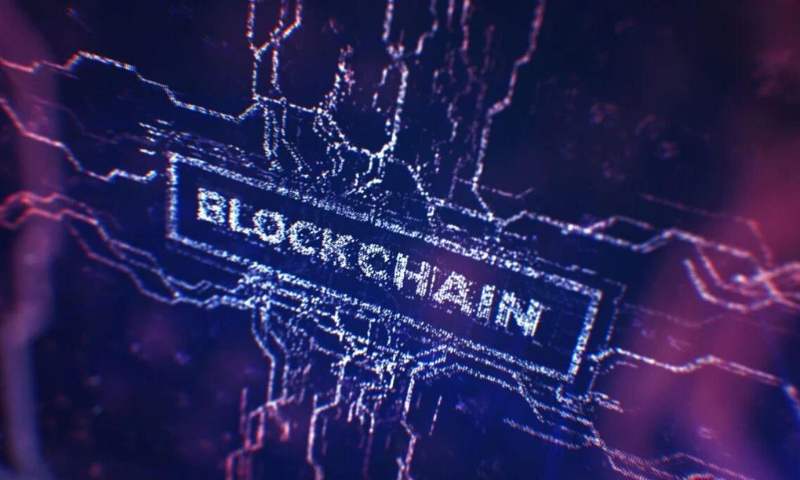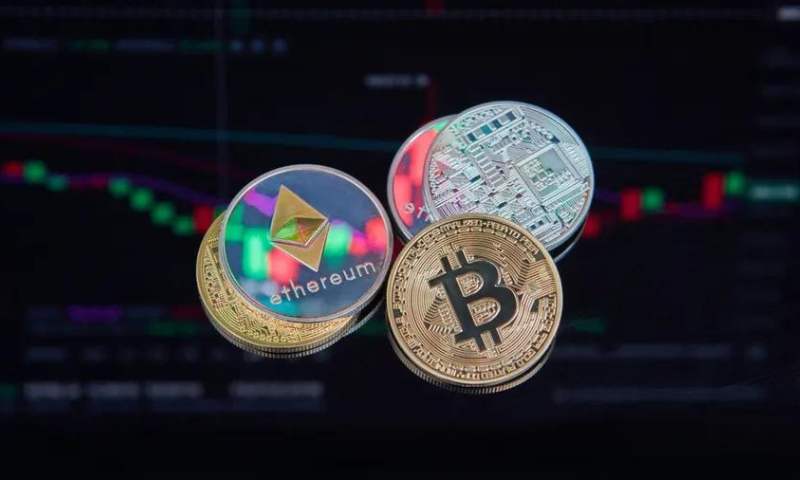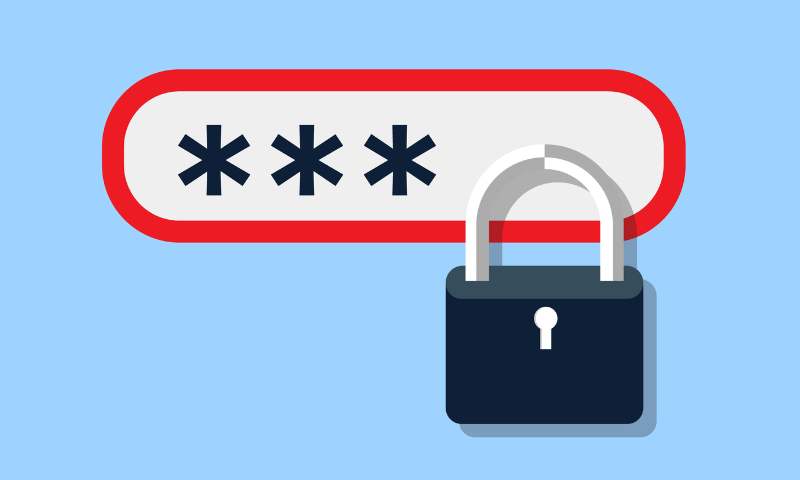Dive into the world where tech transforms trust into code. You’ve heard the buzz, now it’s time to unwrap the mystery of Introduction to blockchain technology for beginners. Think of it as a digital box where everyone agrees on what’s inside, no cheating allowed. Join me as we decode this digital ledger, making it simple to grasp. We’ll see how it’s more than just Bitcoin’s backbone. It’s a new way to keep tabs on data that’s rocking industries far and wide. Let’s start this adventure and learn why blockchain is the word on every tech guru’s lips.
Decoding the Building Blocks: Blockchain Basics for Novices
Understand the Core Principles of Distributed Ledger Technology
Imagine a book where everyone writes down their deals with one another. No one person holds this book. Instead, copies exist with everyone involved. That’s the heart of blockchain, a digital ledger that no single person controls. It’s a record-keeping system that’s open yet secure, all thanks to the magic of modern tech. With blockchain, everyone checks everyone else’s work, so it’s tough to cheat.
Think of it as a game where you need everyone to agree on the score to play fair. Everyone playing the game can see the score change in real-time, ensuring no funny business. This concept is called distributed ledger technology, or DLT for short. It’s like shared Google Docs, but for financial transactions.
Now, the question is, how does DLT work? The answer: It arranges data in blocks, linked together in a chain. Once filled with data, a block joins the chain, and a new block starts. It’s a continuous process, growing like a pearl necklace, where each pearl holds bits of information.
The Role of Cryptography in Securing Transactions
What keeps these chains of blocks safe? That’s where cryptography comes in. It’s a way to lock our data so only the right key can unlock it. Every deal, every swap of money or goodies, gets its own lock—that’s a unique digital signature. Imagine you write a note and lock it in a box. Only the person with the right key can open it and read your note.
In blockchain, this locking and unlocking is serious business. It’s not just notes; we’re talking money, contracts, and even IDs. The system uses complex math to create a signature that’s hard to fake but easy to verify. Think about it: when you sign your name, it’s your mark, showing it’s really you. Cryptography in blockchain is like that, but way stronger.
So, how does blockchain work with this crypto lock and key? When you make a move on the blockchain, say sending coins, you sign it with your digital key. It’s a promise that it’s really you behind the move. Others on the network use your public key to check it’s truly your signature. If it matches, they nod, and the deal goes into the books, secure and set.
We’ve just begun our journey into the blockchain world. There’s a lot more to it – smart contracts that act on their own when conditions are met, various types of blockchains for different needs, and how they all come together to make a system we can trust. But let’s not jump ahead. For now, pat yourself on the back. You’ve taken your first step in understanding a tech that’s changing the world. Welcome to the blockchain community!
The Mechanics Behind the Magic: How Does Blockchain Work?
Exploring Consensus Mechanisms: Maintaining Uniformity Across the Network
Imagine a group of people in a room, each holding a list of all transactions ever made. This list is a blockchain, and the room is the network. A consensus mechanism is a way these people agree on what the list should look like. Blockchain uses consensus to stay uniform and secure.
Now, why does this matter? In blockchain, trust is key. You don’t need to trust a single person, because everyone follows the same rules to update their list. This system means no one can cheat without others catching them. That’s the beauty of blockchain.
One known method is Proof of Work, where people solve tough math puzzles to add to the list. Another is Proof of Stake, where owning a part of the blockchain earns you the right to add to the list. Both methods help keep our digital ledger honest and uniform.
Blockchain Transaction Process: From Initiation to Finalization
Imagine you want to send a friend some cryptocurrency. You start the process, and then it’s like a race for network users, called nodes, to confirm it’s all good. They check the details, and if they match the list, they give a thumbs up. Once enough nodes agree, your friend gets the currency.
This whole thing happens in steps. Your transaction bundle with others gets a unique code, called a hash. Think of this code as a digital fingerprint. This bundle then joins the blockchain. Once it does, changing it is close to impossible. That’s why blockchain’s great for keeping a clear record of transactions.
By understanding these parts, you get why people see blockchain as a big deal. It’s a new kind of record-keeping. It’s fair and tough to mess with. That means better security for everyone. And this is just the start. As you learn more, you’ll see blockchain has even more magic up its sleeve.
The Blockchain Ecosystem: Navigating Different Types and Their Uses
Public vs Private Blockchain: Comparing the Networks
What is a public blockchain? A public blockchain is a ledger that anyone can join. Think of it as an open book where all can write and read. The most famous one is Bitcoin. A private blockchain is different. It’s like a club where only certain people can enter. Banks or firms might use these. They pick who has a say.
Public chains rely on lots of people to store data. This makes them secure. But, they can be slow. Private chains, on the other hand, can be quick. Yet, they depend on trust more. This is because fewer folks oversee them.
Identifying Blockchain Use Cases: From Finance to Supply Chain
What are blockchain’s uses? Finance is a big one for blockchain. It makes sending money clear and quick. People in different places can deal without a middle person. Also, there is less chance for mistakes or fraud.
Supply chain is another. Here, blockchains track goods from start to end. Now, we can catch issues fast. We can make sure things are made and sold right.
Smart contracts use blockchain too. They are rules in code that act when a deal is met. Imagine you rent a car. A smart contract can check if you paid. Then, it can unlock the car for you.
Blockchains give power back to people. They can secure data and create trust without big firms. With smart contracts and other tools, they can change many fields.
This is just a start to how blockchains help us in work and life. They can track food, help artists, and give IDs to those who need them. There’s much to learn and even more to build.
The Future on a Ledger: Emerging Trends in Blockchain Technology
Innovations in Blockchain Scalability and Interoperability
Making blockchain faster and working with others is a big deal now. These changes help blockchain hold more data and link with various systems. Scalability means more transactions can happen at one time. Interoperability allows different blockchains to share info and work together.
Think of blockchain like a busy beehive. Each bee has a job that helps the hive. But now, imagine the hive getting bigger and welcoming bees from other hives to help. That’s what we’re doing with blockchain. We’re making room for more activity and letting other blockchains join in the fun.
Blockchain started with Bitcoin. Now, many blockchains exist, each with unique traits. Some are public, like a community garden. Others are private, more like a locked diary. These new trends help them all play nice and share their space.
Investment and Opportunities in Blockchain Ventures
Money is pouring into blockchain like rain into a bucket. Folks see a chance to make a difference and profit. Investing in blockchain isn’t just buying cryptocurrencies. It’s backing new ideas that can change how we do things every day.
When you invest in blockchain projects, you’re planting a seed. With care and time, that seed can grow into a strong tree. That tree can be anything: a new way to keep track of who owns what, or a system to make sure your food is fresh from farm to table.
Businesses are starting to see blockchain as a tool, not just a buzzword. It’s like picking up a power drill for the first time. Once you know how to use it, you can build amazing things. Some are even using blockchain to keep health records safe and private.
So, what does all this mean for you, the beginner? It means the future of blockchain is bright and bustling. It’s like we’re at the start of a race, and everyone’s getting ready to run. With every new improvement, blockchain is stretching its legs, getting stronger and faster.
And guess what? You can be part of this. You can learn about blockchain basics, how it works, and where to start. You might think it’s too complex, but it’s like learning to ride a bike. A little shaky at first, but soon you’re cruising.
As you dive in, remember that blockchain is more than fancy tech talk. It’s a fresh way to share info and trust that everything’s correct without much hassle. It’s a leap towards a world where everyone gets a fair shake, and that’s something worth learning about.
In a nutshell, keep your eyes on blockchain. It’s weaving into our lives, thread by thread. With each new development, we see how it can make life smoother. And remember, it’s not magic. It’s logic. It’s people coming together to solve puzzles. And you’re more than welcome to join the party.
We’ve gone on quite the journey, breaking down blockchain into simple bits. First, we learned about how it spreads out records across many places to keep data safe. We saw that tricky math—cryptography—locks away our transactions tight.
Then, we dived into how all computers in a blockchain agree, which keeps our info the same everywhere. And how a blockchain deal goes from start to end.
We also checked out different blockchain types—public for everyone, private for just some. We saw how blockchains help with money and tracking items from start to finish.
Lastly, we peeked at what’s coming next. Blockchains will get better at talking to each other and grow fast—offering new chances for us to invest and explore.
All in all, blockchains are not just tech talk; they’re making our future smarter, safer, and open to all kinds of cool changes. So keep your eye on this space—blockchain’s just warming up!
Q&A :
What is blockchain technology and how does it work for beginners?
Blockchain technology is a distributed ledger system that allows for secure, transparent, and tamper-proof record-keeping. For beginners, it’s essential to understand that blockchain is made up of a series of blocks that contain data, such as transaction records. Each block is linked to the previous one through a cryptographic hash, forming a chain. This decentralized network of computers, or nodes, validates and records transactions, making the data public and easily verifiable, yet secure from unauthorized alterations.
Why is blockchain considered secure for transactions?
Blockchain is considered exceptionally secure due to its decentralized structure and use of cryptographic hashing. Every block in the chain contains a unique hash and the hash of the previous block, creating an irreversible chain. If a hacker attempts to alter a transaction, they would have to change every subsequent block’s hash in the chain across all copies of the ledger, which is computationally impractical. Additionally, multiple nodes must reach a consensus to validate new transactions, further protecting the network from fraudulent activity.
Can blockchain technology be used beyond cryptocurrencies?
Yes, blockchain technology has a vast potential beyond cryptocurrencies. Its ability to provide secure, transparent, and permanent records has seen it applied in various industries like supply chain management, healthcare, voting systems, real estate, and intellectual property management. Smart contracts, enabled by blockchain, automate agreements without the need for intermediaries, streamlining processes across numerous sectors.
What skills are required to learn blockchain technology as a beginner?
To learn blockchain technology as a beginner, one should start with a foundational understanding of basic cryptography, computer science, and networking principles. Familiarity with programming concepts and languages such as JavaScript, Solidity, or Python can be beneficial as they’re often used in blockchain development. Critical thinking and a willingness to learn about decentralized systems and their applications are also essential skills for diving into the blockchain space.
Where can beginners find resources to start learning about blockchain?
Beginners looking to delve into blockchain technology can find a plethora of resources online. Educational platforms like Coursera, edX, and Udemy offer courses on blockchain fundamentals, while websites such as blockgeeks.com provide articles, guides, and tutorials. Joining blockchain communities, attending webinars, and following industry experts on social media can also help beginners stay updated with the latest trends and knowledge in the field.






